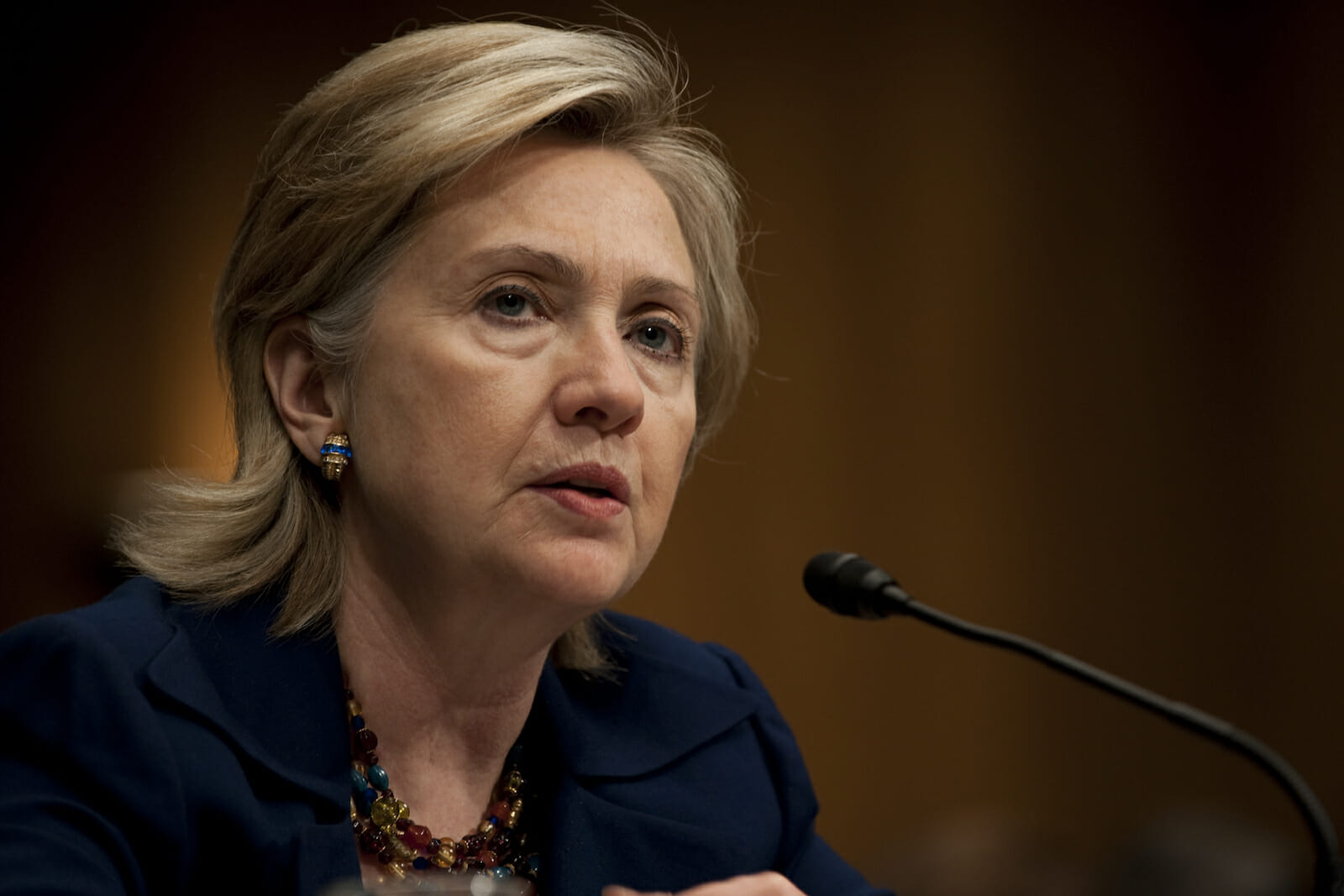
The Obama Admin has itself to Blame for Renewed Benghazi Scrutiny
The renewed controversy over the Obama administration’s handling of the Benghazi terrorist assaults reinforces two broad criticisms made of Mr. Obama. The first is that his foreign policy decision-making is heavily shaped by a national security inner team, drawn largely from the young staffers in his 2008 presidential campaign, that habitually subjects policy to political machinations. The second is that this team presides over an especially defective policy apparatus.
As noted in earlier posts, these are charges even former administration staffers and otherwise sympathetic pundits advance. As Vali Nasr, who worked on AfPak issues in the first term, argues in his new book, The Dispensable Nation, that, “The president had a truly disturbing habit of funneling major foreign-policy decisions through a small cabal of relatively inexperienced White House advisors whose turf was strictly politics. Their primary concern was how any action in Afghanistan or the Middle East would play on the nightly news, or which talking point it would give the Republicans [emphasis added].”
This theme is echoed by others, including David Rothkopf and Thomas Ricks, both commentators who can hardly be labeled as partisan. David Ignatius, the foreign policy columnist at the Washington Post, likewise contends that the administration’s response to key international issues is usually “driven by messaging priorities rather than sound, interests-based policy.” On Benghazi in particular, he argues that the White House “spent more time thinking about what to say than what to do.”
The second theme, that of managerial incompetence, is underscored by Rosa Brooks, a former administration official at the Pentagon. The Obama team, she noted recently, has created “an exceptionally dysfunctional and un-visionary national security architecture – one that appears to drift from crisis to crisis with little ability to look beyond the next few weeks.” This chaos, she claimed, results in “shallow discussions and poor decisions.”
Both critiques were given new life by last week’s release of 41 declassified State Department documents showing that White House staffers injected election-season spin into the official story-line about the September 2012 jihadi assaults on the U.S. diplomatic mission and a CIA annex in Benghazi that killed J. Christopher Stevens, the U.S. ambassador to Libya, and three other Americans. This spin fed a now-discredited administration narrative about the attacks being the consequence of a spontaneous violent reaction to an anti-Muslim YouTube video. This line, concocted less than a week after Mr. Obama touted the success of his counter-terrorism policies at the Democratic National Convention, was given wide broadcast by Susan E. Rice, then the U.S. ambassador to the United Nations, during the Sunday morning news programs five days after the attacks. Secretary of State Hillary Clinton also propagated this narrative, as did President Obama in his remarks before the UN General Assembly a full two weeks following the incident.
Among the released documents is an email sent three days after the attacks by Benjamin J. Rhodes, one of Mr. Obama’s top national security aides who has been with the president since before the 2008 campaign and is seen by many as his alter ego. Last year, the New York Times reported that he has “a reputation around the White House as the man who channels Mr. Obama on foreign policy.” In the email, Mr. Rhodes urged Ms. Rice, currently the U.S. national security advisor, to assert in upcoming television appearances that the attacks were the consequence of protests “rooted in an Internet video, and not a broader failure of [administration] policy.” He emphasized this point multiple times even though, as subsequent disclosures now reveal, the White House was then receiving numerous streams of intelligence to the contrary.
Gregory Hicks, who served as the No. 2 U.S. official in Libya at the time of the attack, testified before a Congressional hearing last summer that he immediately reported to the State Department that the Benghazi assault was a terrorist strike. According to him, “the only report that our mission made through every channel was that there had been a [terrorist] attack.” The hearing also presented into evidence a September 12th email from Elizabeth Jones, the acting Assistant Secretary for Near Eastern Affairs, showing that these reports had quickly traveled up the State Department’s chain of command. In this email, Jones tells Ambassador Rice, Cheryl Mills (Mrs. Clinton’s chief of staff and long-time consigliere), and Patrick Kennedy, who as the Under Secretary for Management had ultimate responsibility for diplomatic security in Libya, that the attack was the premeditated work of Ansar al-Sharia, an Islamist militia group affiliated with Al Qaeda. The documents released last week also included an email sent that same day to Ms. Rice from one of her staffers reiterating this point.
The CIA station chief in Libya was reporting a similar message, which was supported by National Security Agency communications intercepts (here, here, here and here). This message made its way into the initial version of the talking points that the agency prepared for the administration but which were then misleadingly revised (here, here and here). A bipartisan report released earlier this year by the Senate Intelligence Committee found that on September 18, 2012 – a full week before Mr. Obama’s UN address – that the “FBI and CIA reviewed the closed circuit television video from the Mission facility that showed there were no protests prior to the attacks.” Moreover, on September 20, Director of National Intelligence James Clapper acknowledged in a closed Congressional session that the incident “had all the earmarks of a premeditated attack.”
Similarly, General Carter Ham, then head of the U.S. regional military command for Africa, told a closed House hearing in February 2013 that he immediately knew that the incident was indeed a terrorist attack and that he quickly relayed this information to his Pentagon superiors, including then Defense Secretary Leon E. Panetta. Ham publicly reiterated last June that “It became apparent to all of us quickly that this was not a demonstration, this was a violent attack.” Mr. Panetta has also acknowledged in Congressional testimony that he quickly understood the incident to be the result of terrorist action.
A Defense Intelligence Agency assessment produced two days after the attacks assigned blame to militant groups affiliated with Al Qaeda. We know from last year’s release of nearly 100 pages of email communications detailing the administration’s discussions about the attacks that the FBI quickly came to the same conclusion. And a few days ago, a retired military official who was serving as Africa Command’s deputy intelligence chief during the attack testified at a House hearing that “what we did know quite early on was that this was a hostile action. This was no demonstration gone terribly awry.”
The administration is correct that the CIA initially, though incorrectly, provided an assessment that included reference to protests outside of the Benghazi mission. But even this did not mention the Internet video that the administration went on to insist was at the heart of the Benghazi story. Moreover, the assessment traced the attacks back to previous assaults in the Libyan city carried out by “extremists linked to al Qaeda.” According to Congressional testimony provided last month by Michael Morell, who served as the CIA’s deputy director at the time of the attacks, the administration’s video narrative went beyond what the agency was then telling the White House. It’s also relevant to note that the CIA assessment was eventually so watered down that David Petraeus, the agency’s director, thought it was useless.
The manner in which last week’s document release occurred feeds suspicions that the administration has been less than candid in its presentations about the assaults. They were not part of last year’s document dump that the White House, pursuant to a Congressional subpoena, claimed was the complete record about Benghazi. Rather, the new documents saw the light of day only after a federal court ordered their release as part of a “freedom of information” lawsuit brought by a conservative watchdog group.
The development prompted the chief political correspondent at Slate, the online magazine which usually takes the White House’s side, to acknowledge that “The Obama administration’s story has never been straight on the Benghazi attack.” Jake Tapper at CNN calls White House efforts to dismiss the significance of the new round of documents “dissembling, obfuscating and often insulting.” And Dana Milbank at the Washington Post argues that “If Republicans succeed in turning the Benghazi ‘scandal’ from a nothingburger into a Double Big Mac, the Obama White House can blame its own secrecy and obsessive control over information.”
The House special committee on Benghazi that is now gearing up will give full examination to the charges of White House politicization. But another possibility deserves equal focus: That the administration’s mishandling of the attack and its aftermath simply reflects the dysfunctional nature of its national security process. One administration official who was part of the Benghazi response underscores this explanation. In a CBS News report a year ago, an official stated: “We’re portrayed by Republicans as either being lying or idiots. It’s actually closer to us being idiots.”
Several issues stand out in this regard: In the days immediately after the attacks, did the National Security Council staffers in charge of coordinating administration policy on the Middle East receive the multiple intelligence reports that contradicted the narrative then being assembled by Mr. Rhodes? If so, did they alert him and Denis McDonough, then the chief deputy national security advisor and now White House chief of staff? To what result? And if they did not receive these reports, why were they not in on the information loop?

